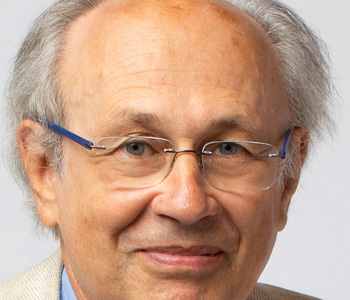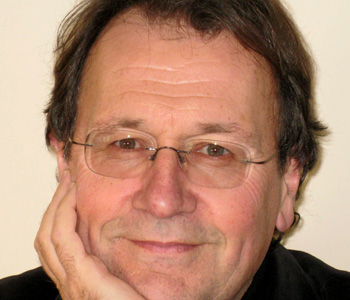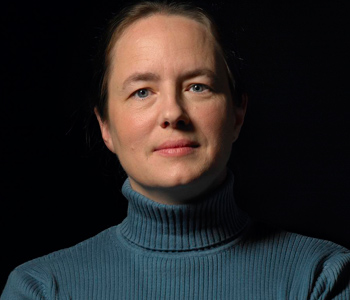Robert L. Kelly
The Fifth Beginning: What Six Million Years of Human History Can Tell Us about Our Future
University of California Press
141 pages, 6 x 9 inches
ISBN 978 0520293120
I’m what is known in my field as a “dirt archaeologist.” I’ve been excavating archaeological sites in various places for 43 years, and I’m not ready to quit. Why do I do archaeology? Honesty compels me to admit one reason: field research is fun. But I also do archaeology because I believe what Winston Churchill once said: “The farther backward you can look, the farther forward you are likely to see.” A few years ago I admitted that I hadn’t lived up to Churchill’s words. So I decided to make an effort and the result was The Fifth Beginning: What Six Million Years of Human History Can Tell Us about Our Future. At 122 pages, the book is a quick romp through human history—all six million years of it. It’s a lot to cover, but I can do so by using archaeology’s strength.
Many of my colleagues in history see archaeology as their poor country cousin because archaeologists can’t see the past in the detail that historians think is necessary. Our weakness, however, is actually a strength. Without all the details to worry about, archaeologists see the biggest of history’s big pictures. We think about the past in slices of time, periods such as the Stone Age, the Copper Age, or the Iron Age. In The Fifth Beginning, I take that approach to its limit, and search all of human history for global phases. I find four of these, and I call them beginnings: the beginning of technology, the beginning of culture, the beginning of agriculture, and the beginning of the state.
From an archaeological perspective, changes in humanity’s material signature demarcate these beginnings, and those changes signal significant transitions in the organization of human society. The first beginning is marked by crude but effective stone tools. These signal a change in how our ancestors dealt with their environment. Occupying the African savanna, our ancestors became hunters, captured fire, cooked food, and developed pair-bonding and rudimentary language. Natural selection favored this creature, and our ancestors spread beyond Africa into southern Asia and Europe. We never turned our back on technology, of course. Those simple stone tools, in fact, were the beginning of space travel.
The second beginning occurred long after, sometime between 200,000 and 50,000 years ago, and is marked by art and burial ritual. This was when our human ancestors truly became human—when we became cultural, capable of using symbols and of thinking of life in terms of a symbolically constructed world. This was when we could tell myths and legends (and lies), use metaphors and analogies, envision an afterlife, and think about gods and supernatural beings. The second beginning saw the appearance of all that makes humans unique: kinship, religions, and ethnicities. The capacity for culture was also adaptive, and it allowed humans to spread, again, out from Africa starting about 60,000 years ago, and to colonize almost the entire globe over the next 50,000 years.
The third beginning began about 12,000 years ago, and took place in many different places over the next few thousand years. The appearance and spread of domesticated plants and animals, as well as permanent villages with substantial houses marks this transition. This was also the beginning of trade; some goods were exchanged for purely economic reasons and some symbolized cooperative relations of support.
The fourth beginning started around 5000 years ago, and is the time of “states,” of stratified societies with professional classes of merchants, bureaucrats, and warriors. Massive public architecture—temples and tombs, public squares, buildings for government and commerce—mark this transition. This was the time of the Uruk kingdom in southern Iraq, of Egypt’s pharaohs, of the Greeks, Romans, and Phoenicians, and of Chinese dynasties. It was the time of the Maya and Toltecs and Aztecs, of the Huari and Inca. It was a time of remarkable achievements in mathematics, architecture, science, art, and government. And it was also the time of inequality, slavery, warfare, and empire. We still live in the fourth beginning.
I’ve taught prehistory for many years, and I’ve found that although students can accept the fact that humanity has a long and complex history, they also think that history is over. Sure, we were once non-human primates, then cultural hunter-gatherers, then agriculturalists, and later members of states and empires, but now evolution is over. They expect technology to change (maybe we’ll get those flying cars we were promised!), but the organization of human society will not. We are doomed to warfare, poverty, racism, sexism, ethnocentrism and hatred of all kinds. The light at the end of the tunnel really is a freight train bearing down upon us at great speed.
There’s no reason to think this way, and an archaeological perspective tells us why. The previous beginnings were marked by dramatic changes in humanity’s material signature. Thinking like an archaeologist of the future, I ask: has there been a significant shift in humanity’s material imprint since the fourth beginning? It’s hard to see a transition when you are in it, but prehistory teaches us how to look for the signs. And they are all around us: vast numbers of post A.D. 1500 shipwrecks, trash on the moon and on Mars, cables that link the continents, megacities, trade goods that appear everywhere in the world (cell phones, blue jeans), human bone with trace elements and isotopic compositions that reflect a world food network, vast landscapes that are completely modified by humans, trash dumps that would impress Egypt’s pharaohs. An archaeological perspective tells us we’re in the fifth beginning.
Prehistory also tells us to look for the processes that bring human society to a tipping point and produce change. I see three at work: the spiraling cost of war, the effects of capitalism’s full penetration of the globe, and the cultural effects of globalization. Warfare has become very expensive and yet it no longer solves the problems it is intended to solve (Iraq and Afghanistan will ultimately cost $4-6 trillion and who can say that we won?). Capitalism survives by reducing labor costs, but once Africa is fully tapped there will be no cheap labor left in the world, and if robotics and artificial intelligence replace workers, what then? Globalization has brought about a clash of cultures that is driving the U.S. and members of the EU into the arms of xenophobic nationalism, but it is also producing a culture of global citizenship. We seem to be retreating from global cooperation, and yet a world population that will grow to possibly 10 billion by A.D. 2050, and that will have to cope with the now unavoidable effects of climate change, cannot operate without it.
On the first page of The Fifth Beginning, I recount an incident from the late 1980s, early in my teaching career. I had given a closing lecture in which I tried to provide students with a reason to be optimistic about the future.
One student, a young man who had been attentive all semester, disappointed me when he dejectedly stated, “this is the way things always have been, and this is the way things always will be.”
An older African-American woman came to my rescue. She said, “My father was born in slavery.” She explained how that was true, and pointed out that she herself had lived through Jim Crow, KKK lynchings, and the civil rights movement. “Things do change,” she said. But my student didn’t believe her.
I wrote The Fifth Beginning to convince him, and others like him, to approach the future with their eyes open, but also with enthusiasm for what it could be. It could be humanity’s finest hour.
Ever since the fourth beginning, humanity has been trying to figure out how to integrate a world of cultural differences.
The need to resolve that difficulty accelerated after A.D. 1500, when Europe began to “discover” the rest of the world. We tried empire, slavery, and colonialism but none of those worked (thankfully). Today we are trying nationalism, and breaking into separate entities that will madly negotiate with one another to secure an advantage. I predict this will be as successful as empires and colonialism. Why? Because archaeology, while it is hard to interpret, it doesn’t lie. And humanity’s material signature of the past 500 years points to world unification. Cables that literally tie the continents together, and material goods that circle the globe undercut any story that we are not integrated, that we don’t have to cooperate.
Archaeology tells us that unification is inevitable. The only question is whether we achieve it the easy way or the hard way. Right now, it looks like we’ve chosen the hard way. We shouldn’t. We should use the past six million years of human history to see the future. As I conclude in the book, “For the first time since primates dropped out of the trees and flaked a stone into a tool, human evolution could be, should be, must be up to us.”




We don't put paywalls. We don't distract you with ads. We don't sell your data.
Please help to keep this running!